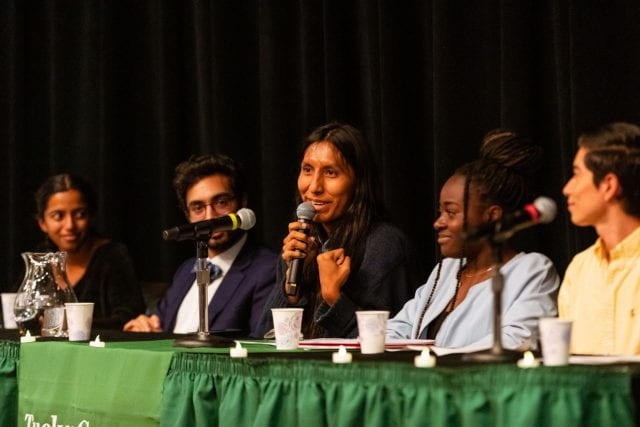
Written by Michael Burns Jr. ’26
As fall embraces Dartmouth campus in vibrant hues of reds and golds, the Student Wellness Center (SWC) continues our journey through the Fall theme of “Brave Connections.” This theme reminds us that bravery is not just about demonstrating strength, but also about the courage to be vulnerable, to step into uncharted emotional territory, and to let our authentic selves shine. For this week of our exploration, we dive into “Breaking Away From the Norm: Bravery to ‘Be the Change’.”
Dartmouth students and community members can mobilize bravery on campus and beyond:
- Sexual Violence Prevention Project (SVPP) & Bystander Intervention: At the heart of this week’s theme lies the bystander intervention in the Sexual Violence Prevention Project (SVPP). SVPP isn’t just a program; it’s a prevention strategy that underscores the importance of leadership and bystander intervention in building a safer community. It empowers students, faculty, and staff to understand their pivotal role in preventing stalking, harassment, dating and domestic violence, and sexual assault. But what does bravery have to do with it?
- Being an “Active” Bystander: The Power of Bravery: One of the fundamental principles of the SVPP is the concept of being an “active” bystander. It calls upon us to move beyond passivity and take proactive steps when we witness situations that demand our attention. This involves the courage to speak up, to intervene, and to offer support when someone is in need. It’s the bravery to say, “I will not be a silent witness; I will be an active agent of change.”
- Challenging Social Norms: Often, societal norms and expectations can virtually force us into conformity, even when those norms go against our core values. This week’s theme asks: Are we brave enough to make choices that align with our values rather than succumbing to misperceived norms?
- In college, societal norms often have immense influence. Everyday, we encounter a diverse range of perspectives, backgrounds, and beliefs that often challenge our previous beliefs. These encounters can be incredibly enriching, opening our eyes to the complexities of the world and compelling us to reevaluate our beliefs. However, they can also create a tug-of-war between ourselves and a desire to fit in. It’s not uncommon to feel pressure to conform to certain norms, whether related to academics, social life, or career goals. The fear of being seen as different can be overwhelming, and this is where bravery comes into play.
- An institution like Dartmouth College also plays a pivotal role: Dartmouth’s commitment to diversity and inclusion fosters an environment where students from various backgrounds can come together to exchange ideas and perspectives. Additionally, Dartmouth’s emphasis on a liberal arts education encourages students to step out of their comfort zones, both academically and socially. This unique mix of individuals and academics creates a rich blend of experiences and worldviews, a catalyst for personal growth and the development of courage. In an environment such as this, the bravery to embrace authenticity in a world that often encourages conformity is invaluable. It’s about being the change we want to see not just in our college years but throughout our lives.
- Building a Braver, More Compassionate World: Compassion is the bridge that connects bravery to empathy. It’s the understanding that everyone has a story, and sometimes, the bravest thing we can do is to extend our empathy and support to those who need it. Compassionate action transcends barriers and builds connections that unite us as a community.
As we navigate through the term, and really the rest of the year, let’s remember that true bravery lies not just in the actions we take, but in the values and principles that guide them. The Dartmouth Bystander Initiative, the courage to challenge norms, and compassionate action are all pillars that hold up the structure of a safer, more inclusive Dartmouth. It is only together that we can create a culture that encourages authenticity and fosters a sense of belonging for everyone.



